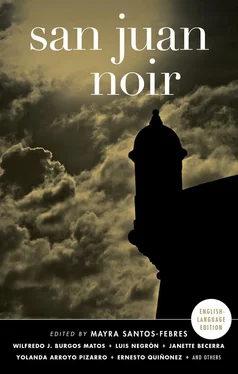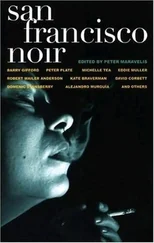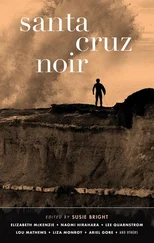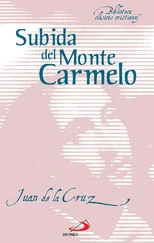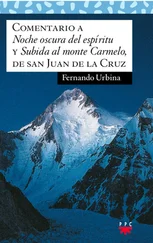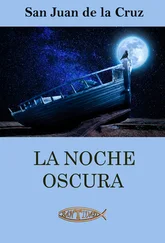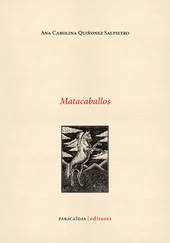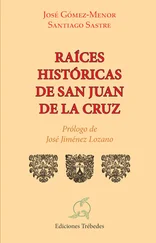Ernesto Quiñonez - San Juan Noir
Здесь есть возможность читать онлайн «Ernesto Quiñonez - San Juan Noir» весь текст электронной книги совершенно бесплатно (целиком полную версию без сокращений). В некоторых случаях можно слушать аудио, скачать через торрент в формате fb2 и присутствует краткое содержание. Город: New York, Год выпуска: 2016, ISBN: 2016, Издательство: Akashic Books, Жанр: Детектив, на английском языке. Описание произведения, (предисловие) а так же отзывы посетителей доступны на портале библиотеки ЛибКат.
- Название:San Juan Noir
- Автор:
- Издательство:Akashic Books
- Жанр:
- Год:2016
- Город:New York
- ISBN:978-1-61775-296-4
- Рейтинг книги:3 / 5. Голосов: 1
-
Избранное:Добавить в избранное
- Отзывы:
-
Ваша оценка:
- 60
- 1
- 2
- 3
- 4
- 5
San Juan Noir: краткое содержание, описание и аннотация
Предлагаем к чтению аннотацию, описание, краткое содержание или предисловие (зависит от того, что написал сам автор книги «San Juan Noir»). Если вы не нашли необходимую информацию о книге — напишите в комментариях, мы постараемся отыскать её.
San Juan Noir — читать онлайн бесплатно полную книгу (весь текст) целиком
Ниже представлен текст книги, разбитый по страницам. Система сохранения места последней прочитанной страницы, позволяет с удобством читать онлайн бесплатно книгу «San Juan Noir», без необходимости каждый раз заново искать на чём Вы остановились. Поставьте закладку, и сможете в любой момент перейти на страницу, на которой закончили чтение.
Интервал:
Закладка:
You finally escape from the restraint of the scarf and your forehead feels sweaty, your face is hot, and your ears are red. You leave Samira in the darkness and run to the train. I’m a delinquent, you think, seeing the terminal as an impossible goal. Finally, it’s there in the distance and you can hear your own heart beating like a drum. It’s no longer imaginary music, it’s an internal percussion. You want to forget that conversation. You want to get home, shower, and erase the memory of Samira’s words. You long to be in front of the chalkboard. Invertible functions, variable isolations, ratios and proportions. You see a black cat; it moves quietly, without hurry, without worry. The animal turns around to fix its gray eyes on yours. If it could speak, what would it say to me? The feline’s gaze is challenging, uncomfortable, and intimidating. You look back the way you’ve come, back to where you left El Gato’s girlfriend. Samira, the girl with the mole in the shape of a cockroach on one elbow, an unsolved equation. With a kind of guilty feeling, you decide to go back and solve it.
Inside and Outside
by Edmaris Carazo
Old San Juan
“I’m a resident,” he said, and removed the piece of paper from the glove box that apparently confirmed it. The officer looked at it, tilted his head like a dog, checked out my legs, looked him in the eye. He showed the officer his perfect teeth and returned the head tilt. I prayed that he didn’t catch a whiff of alcohol on our breath.
He looked at the document again... “Go ahead,” he finally said, holding the paper a couple seconds more before returning it. He didn’t believe us. That’s what I thought, but maybe it was because Miguel didn’t live in Old San Juan. I really wasn’t sure where he lived. Yes, there was his father’s house in Carolina, where I waited for him that one time in the pickup while he looked for his board. The same house where we shook the sheets in the half-light of a room with the door open and his old man’s snores as background music. There was also that empty apartment with nothing but a cot and a refrigerator, a very useful place but not fit to live in. Resident — a resident of Old San Juan — I doubted it more than the officer did. Anyway, deep down, I celebrated his lie.
Old San Juan is like a family member you miss right up until the moment you see them again. Not a day goes by that you don’t show up and wonder what’s going on now, what caused the hullabaloo this time. Then certain streets get shut down and only people who live there can enter. The guards stop you in front of Plaza Colón and filter out those who can enter. The residents of Old San Juan are the lucky ones, those mythical creatures. Nobody knows where they park, or how they’re able to go in and out and lead relatively normal lives within the walled city.
The only thing worse than trying to get into Old San Juan on a Friday night is trying to do so when it’s raining. On this island, cars stop moving when the first raindrop hits. Any street, any intersection, any checkpoint can become a traffic jam. San Juan in the rain is a spectacle: every puddle illuminated by streetlights, every cobblestone slick — even the disgusting ditches acquire a certain charm. I love cities in the rain. They’re like men in suits. If a city doesn’t look beautiful in the rain, it never will.
I always enter through the lower end, not caring where I’m going. Even though I come down Avenida Muñoz Rivera as if to go past, I always stop in Plaza Colón, traffic jam or not. I head down as if I were going to the Tapia theater, along the touristy cultural route. I always park at the Doña Fela parking garage on Calle Comercio. It’s dark and ugly, but it only costs three dollars for the whole night and it’s close to my usual haunts — the restaurants, the bars, Paseo la Princesa. When it’s up to me, I stick with Calle Fortaleza and Tetuán. Familiar routes soothe my soul.
I hate driving. When you first start driving, your car is a window of freedom, providing the illusion of being able to go wherever you want — ignoring the small fact that we’re stuck on a piece of dirt surrounded by water. Besides, I’ve been nearsighted since I was twelve, before my first period. At night the lights blind me, and alcohol makes it even worse, drying out my eyes and contacts. My lenses reflect the glare of the stoplights and headlights of other cars, and the additional $134 was too much to pay to have them put on antireflective coating. It seemed like a pointless charge at the time.
Miguel loves to drive, I imagine in his mind it’s like surfing on dry land. Miguel does everything with grace: even scratching his beard, tying his hair up in a bun — that would be feminine if it wasn’t for his huge hairy hands filled with rings. Being natural is easy for him, which sounds redundant, but it’s not. I, on the other hand, look like I’m about to have an aneurysm when I’m driving through Old San Juan, dodging bums who cross the streets as if they have license plates of their own. It’s like they wear dark colors on purpose, blending into the wet cobblestones with their filthy faces and bags on their feet. Maybe that’s why I prefer that someone else drives, why I don’t question the white lie. Because it saves me from parking in the Doña Fela, allows me to avoid the aroma of rancid piss, of local beer, that sweet rotten smell that fills the city. When I leave the Fela, I usually head right for the street, even though the parking lot has a pedestrian walkway. I hurry out through that little exit, “home” to a commune of who knows how many. I don’t know if they’re the same ones or if they sleep in shifts. I never ever look them in the eye, I dodge their sores, I hold my breath when they’re close by. For some reason I have nightmares about passing through that space — I’m terrified that they’ll latch onto my legs, throw me to the ground, touch me, infect me.
We got on the Norzagaray and drove around aimlessly, seeing the coast from the highest point on the street, passing by La Perla, like tourists, at a distance — seeing the little colorful houses, crammed together, dropping down to the shore. In its beginnings, La Perla was a slaughterhouse, cemetery, and residence for slaves and servants. It was there that they slaughtered cattle and buried humans, outside the walled city, of course. The poor sometimes have the best views in the world, as well as some cemeteries.
We found a place to park on the street, a miracle that would’ve never happened to me, and we went down the San Justo hill. Whoever says bajando hasta las calabazas obviously hasn’t tried to walk down cobblestone in high heels. I was using Miguel as a walker, avoiding cracks, gutters, and raised cobblestones. We stopped at a door, Miguel took out his cell phone, waited, looked up, then down at the ground. “Caballo, I’m outside,” he said, and closed the cell phone. It was an old flip phone, prepaid like a burner. While we waited, he hugged me from behind, bit my neck, and squeezed me, until someone appeared in the doorway.
It was a kid — he looked like a minor — pale, bright-eyed, fragile, freshly bathed. “Come in, come in.” We followed him up a spiral staircase that seemed endless. It was very dark and smelled like damp wood and cat piss. We came to a huge door, which wasn’t a standard rectangle. It was tall, and the upper part was a semicircle with gold-stained glass windows. When it opened, we were transported to another dimension.
It was cold in Old San Juan in mid-August, central air blew throughout the whole world of that apartment, which was covered in varnished wood paneling. The ceilings were exceedingly high; I couldn’t help but wonder how the hell they’d hung all those chandeliers. The kitchen was spacious, with stainless-steel appliances. On the other side was the living room, some white leather sofas, plush cushions, and about half a dozen women who looked like they’d been pulled out of the pages of magazines. The music seemed to be coming from the walls themselves. It was one of those electronic rhythms that make the floor and your ribs shake. There were three open bottles of champagne in silver buckets full of ice. And yet, almost nobody was drinking; everyone was dancing, moving their blond heads from side to side, as if hearing a different rhythm.
Читать дальшеИнтервал:
Закладка:
Похожие книги на «San Juan Noir»
Представляем Вашему вниманию похожие книги на «San Juan Noir» списком для выбора. Мы отобрали схожую по названию и смыслу литературу в надежде предоставить читателям больше вариантов отыскать новые, интересные, ещё непрочитанные произведения.
Обсуждение, отзывы о книге «San Juan Noir» и просто собственные мнения читателей. Оставьте ваши комментарии, напишите, что Вы думаете о произведении, его смысле или главных героях. Укажите что конкретно понравилось, а что нет, и почему Вы так считаете.
